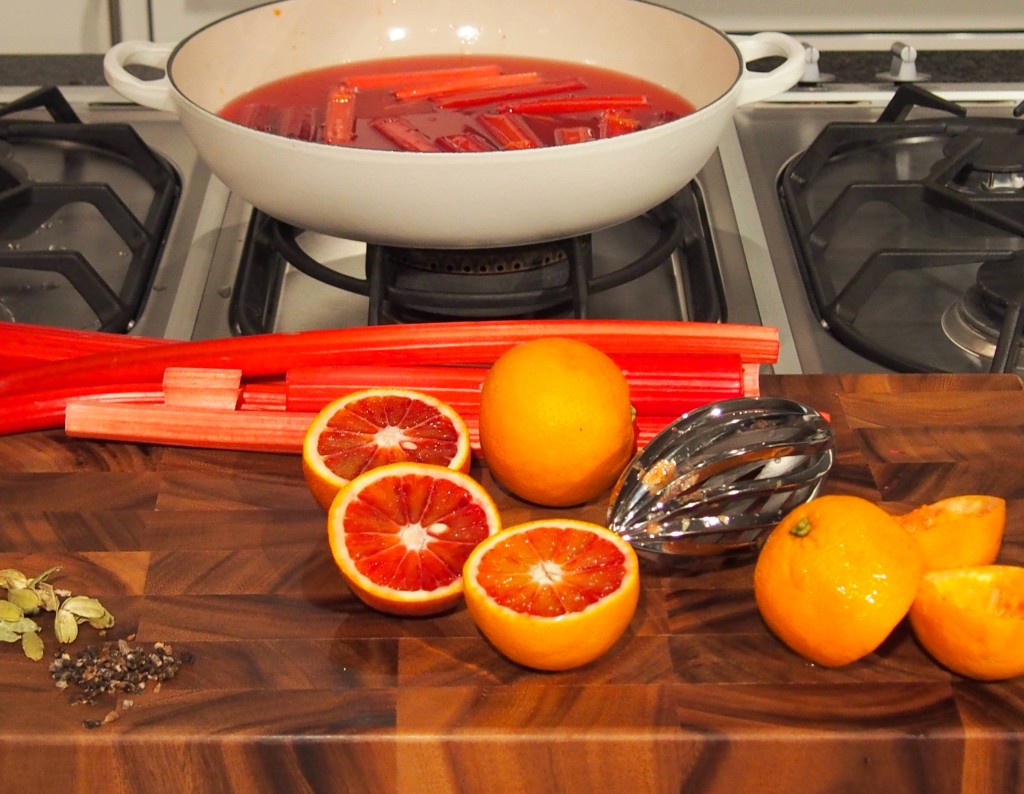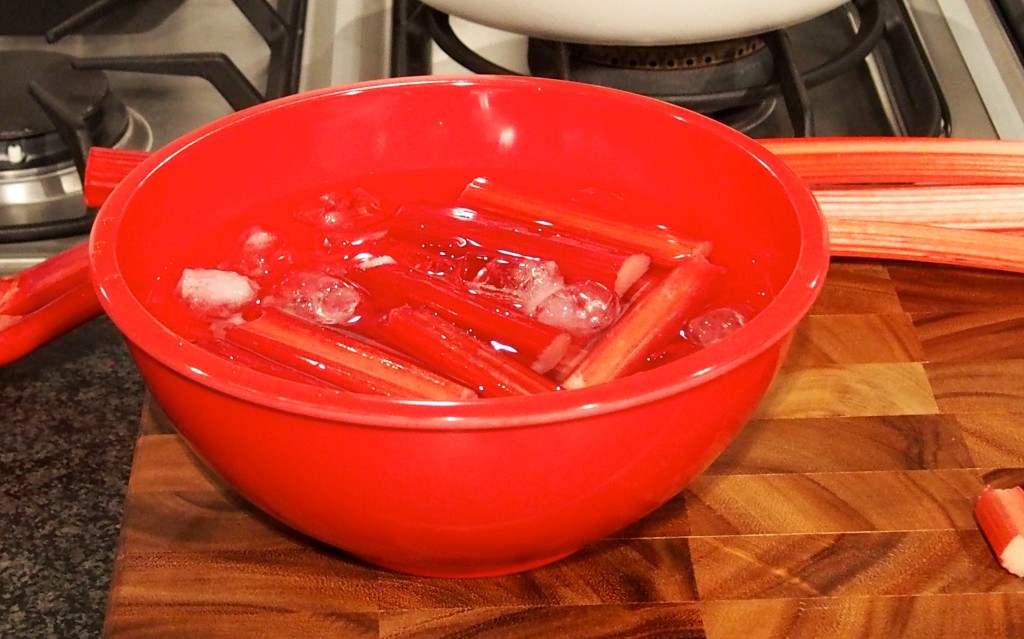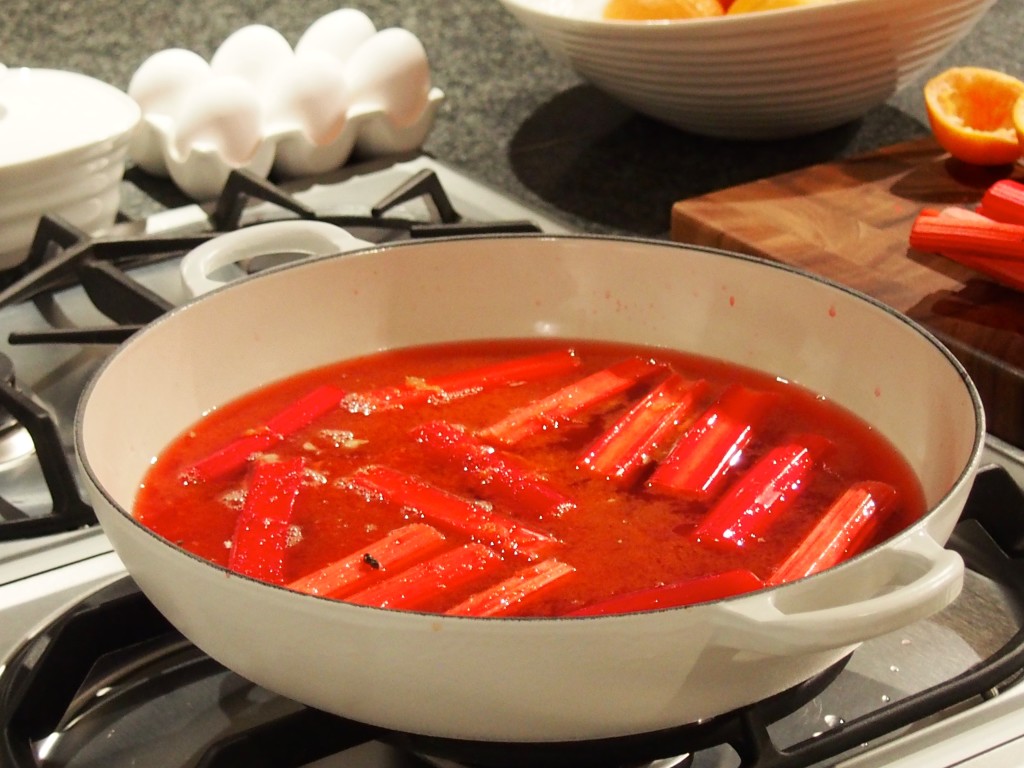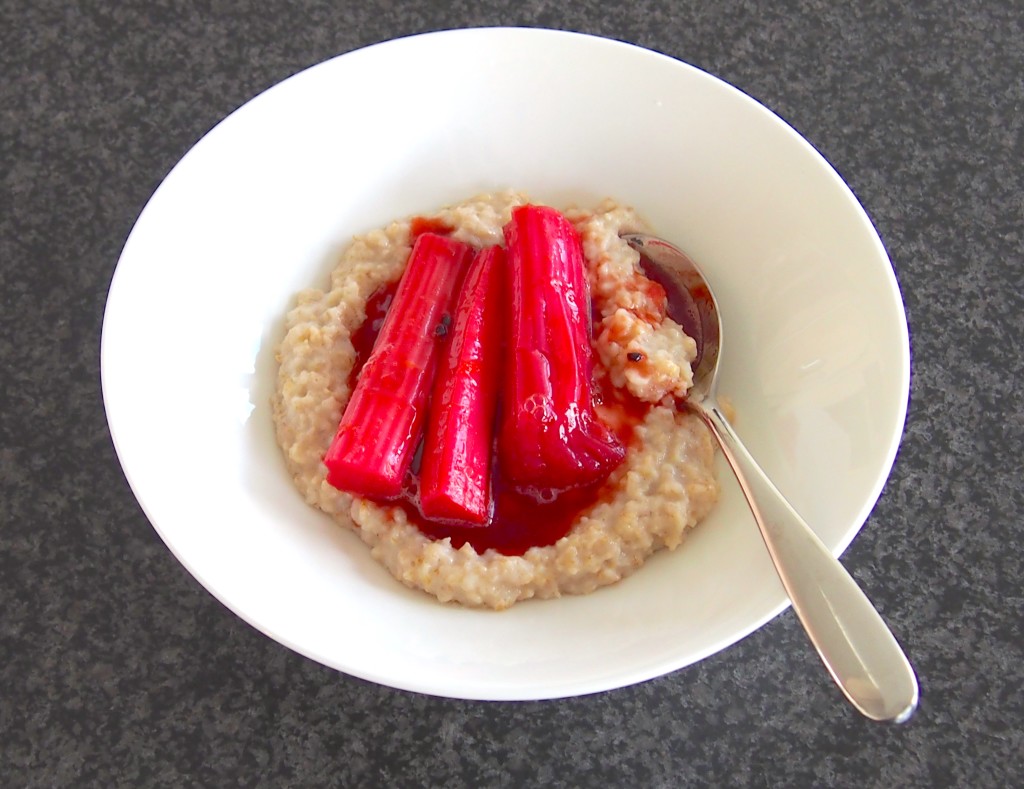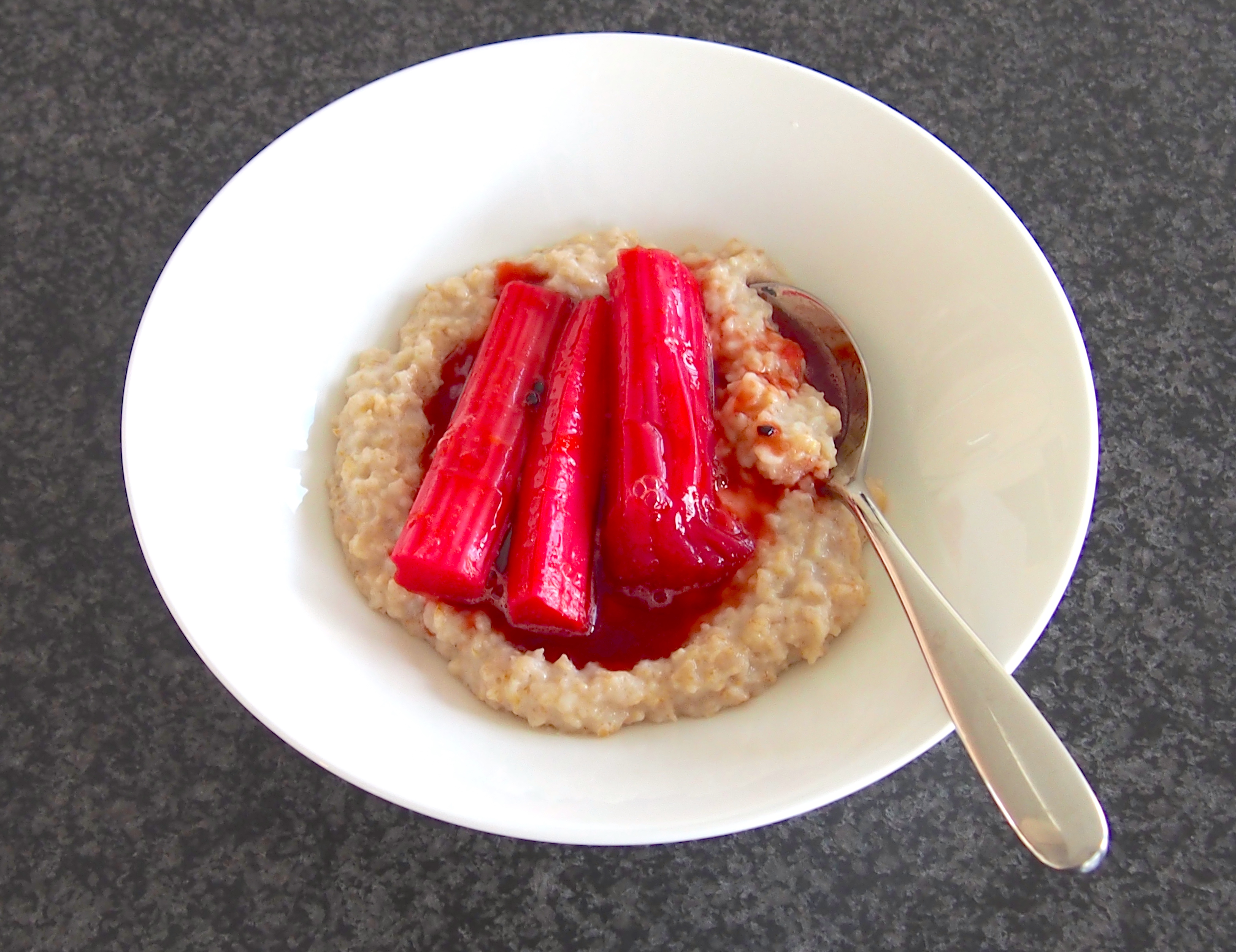It’s the end of January, and in the dark sheds of Yorkshire’s Rhubarb Triangle, there’s groaning in the gloomy dark… {And yes, I did say ‘Rhubarb Triangle’!} Forced rhubarb is a prized crop in the UK’s growing season, and actually has Protected Designation of Origin (PDO) status under the European Commission’s Protected Food Name scheme. This is a serious business.
Before the rhubarb can be confined into its gloomy dark, it must first spend 2 years outside in the open, where it can absorb the sunlight and store it in its roots. After a brief exposure to frost, the rhubarb is re-planted inside the long and dark sheds to await its metamorphosis. There, in the warmth, it begins to creak into life, furtively growing upwards, putting all its energy into that tender pink stem as it tries to find the light. Indeed the harvesting process is carried out by candlelight, to ensure that no colour changes can take place. As I said, this is a serious business.
This lipstick pink vegetable {and yes, it’s a vegetable, not a fruit} is dominating my days at the moment! From rhubarb tarts to rhubarb cocktails, rhubarb creme patisserie, soufflé and ice-cream, candied rhubarb, rhubarb crumble – there will be no end until I’ve used every last stem I can find… Between it and the equally anticipated blood orange season, I shall be practically lipstick pink myself in a few weeks…
I first made this poached rhubarb for a tart, but I liked it so much, that I’ve made it several times since. It’s very versatile, you can use it in porridge, maybe with rice-pudding, over ice-cream – anything. Great to keep in the fridge for when you need a pink pick-me-up!
Ingredients:
juice of 3 to 4 blood oranges
100ml cranberry juice
seeds of 6 green cardamom pods
2 Tbsp Grand Marnier (optional)
3 stalks of rhubarb, cut into matching lengths
Method:
- Chop your rhubarb into the required lengths, and if you have time, shock it in an ice bath to help retain the colour.
- Combine all of the ingredients of the poaching liquor together, and bring to a boil.
- Now. Having done this three times, and not being particularly attentive (!), I found that it was best if I brought the liquor to a boil and then turned it off! Put the rhubarb in, and set a timer for 5 minutes.
- After 5 minutes, turn the rhubarb over. It won’t be tender at this stage, unless you’re using very tiny stalks. After the second five minutes, bring the liquor back to a boil, and immediately turn it off again! Turn the stalks after a further five minutes, then squidge them, as you might do a steak. If they feel nearly there, remove them immediately – they will continue to soften. This method will at least ensure your rhubarb does not disintegrate in the pan (as my first batch did).
- If they’re still terribly firm, turn them over and wait a further five minutes. When just about tender, set aside the rhubarb, and reduce the liquor down to a thick and syrupy glaze.
- Keep your rhubarb in a container in the fridge, soaking in the cooking liquor.
